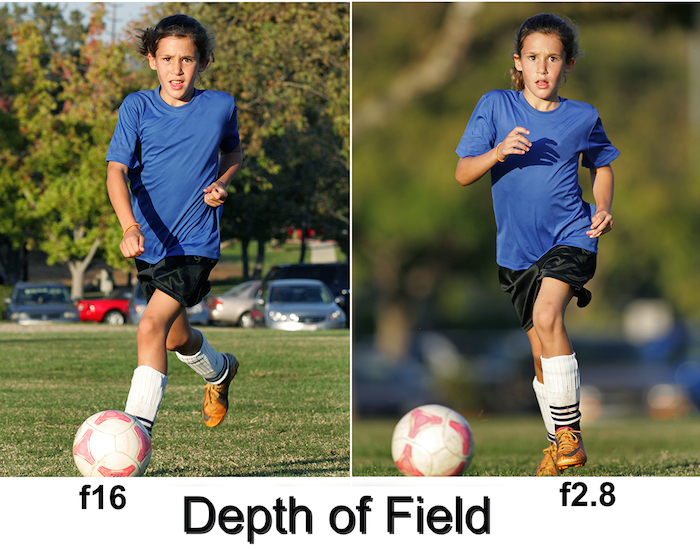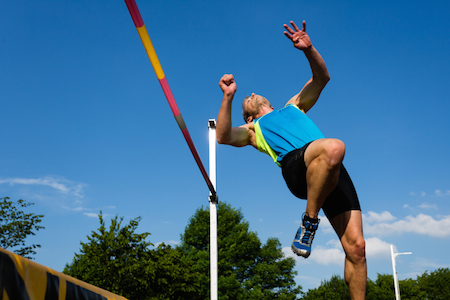Your Sports Photography Comfort Zone
So here is the thing about photography and in this case, about sports photography: there is always more you can learn. You don’t ever really hit a point where you “know it all”. The thing that makes photography fun is that modern technology allows us to jump into the basics very easily. Cameras have become so automated that it is fairly easy to pick up a SLR camera (that is a fancy way to say that you have a camera where you can change lenses and control the settings) and start taking photos. When you capture your first cool action photo, you will be hooked. “Hey check it out. I grabbed a photo of my daughter pitching in her first softball game.” That is so cool. At this level there is so much you can do to explore that world. Put your camera on Automatic mode and start to get more savvy about timing and placement. Let’s look at all the ways you can explore sports photography on the Automatic setting level.

The Basics - This is a really fun phase of your journey as an amateur sports photographer. There are even Sports Photography Modes on your camera that make simple technical adjustments that help to freeze the action. Technically, that is about all you need to do at this point. Now it is time to start playing around with your timing. Always shoot earlier than you think you should. Remember, if you saw the moment before you pushed the trigger, you missed it. You want to get in the habit of pushing that trigger in anticipation of some peak action. Let’s say your son plays soccer and is a goalie. If you are focused on him and the other team is close enough to take a shot on goal, you need to push that trigger as soon as you see him start to lean in the direction of the incoming ball and keep shooting. In reality you may burn off 6 frames but in one of them, you will see the ball in the frame. Keep that one shot and delete the rest. That is the beauty of digital. The other exercise you can do at this level is finding your best positioning. Where is the most action taking place and where do I want to be if the big moment happens? Learning the game, that is another big piece. Your photos will be that much better if you understand the basic rules of the game. Want some more things to work on? How about following the emotion of the game? Capturing the emotion on the sidelines or the intensity in the face of your kid during a time out can be more fulfilling than any action shot you will capture on the field.
That should keep you busy for a while and you are learning all the basic elements to become a confident photographer. Feel you are ready to take your sports photography up a notch? Do you look at professional sports photos and think, why aren’t my shots like that? You are ready to take the next step.
Making the leap - Believe it or not, you are not all that far off from capturing photos that you might see in a sports magazine. While big expensive lenses can give a slight advantage, it is not the only thing that makes a pro a pro. At this point you need to learn how to control your settings. Did you notice that when you were taking photos in the Sports Photography Mode there were times when the camera made the wrong choices? Remember, your camera is a computer and not human. It is only making choices based on a mathematical equation as the meter sees the light. Many times however, you need to adjust those corrections. You need to control the shutter speed to freeze the action, shorten your depth of field, make exposure compensations to figure in jersey tone or the intensity of the light, etc. While these may sound like principals that are beyond you, they are not. It is all about learning to control your settings. Shutter speed. Aperture. ISO. Depth of Field. The great thing about learning these basic building blocks is that they are not only useful for sports photography but they are the foundation for any photographic situation. You will start to control your images rather than relying on the computer in the camera. Now you can make sure and freeze that action. You can open your aperture so that you create a short depth of field so you can isolate the action and throw the background out of focus. Beyond the things you can do in the camera, taking the next step means spending more time on your computer editing and correcting your images as well. Learn to sharpen, shift colors, crop, adjust levels and contrast, etc.
I have mentioned a lot of concepts here that I have covered in more detail in other articles. If you want to learn about these exercises and maneuvers in more detail, go back into the directory of sports photography tips and do some reading. There is a whole world to explore and learn and the best part is that you are learning an art while capturing your family at play. A win/win situation. Dive in and as always, have a blast!
NEW! Free Sports Organization Resources
All of TeamSnap's ebooks, articles, and stories in one place. Access Now
Similar Articles:

Depth of Field Tips in Sports Photography
So why the heck do photography terms sound so complicated?…
Read More

Photographing Sports - Mastering the Big 3 Camera Settings (#4 in a series of 4)
So after reading this four part series on the Big Three…
Read More

Sideline Etiquette
Today I would like to talk about the art of navigating the…
Read More
